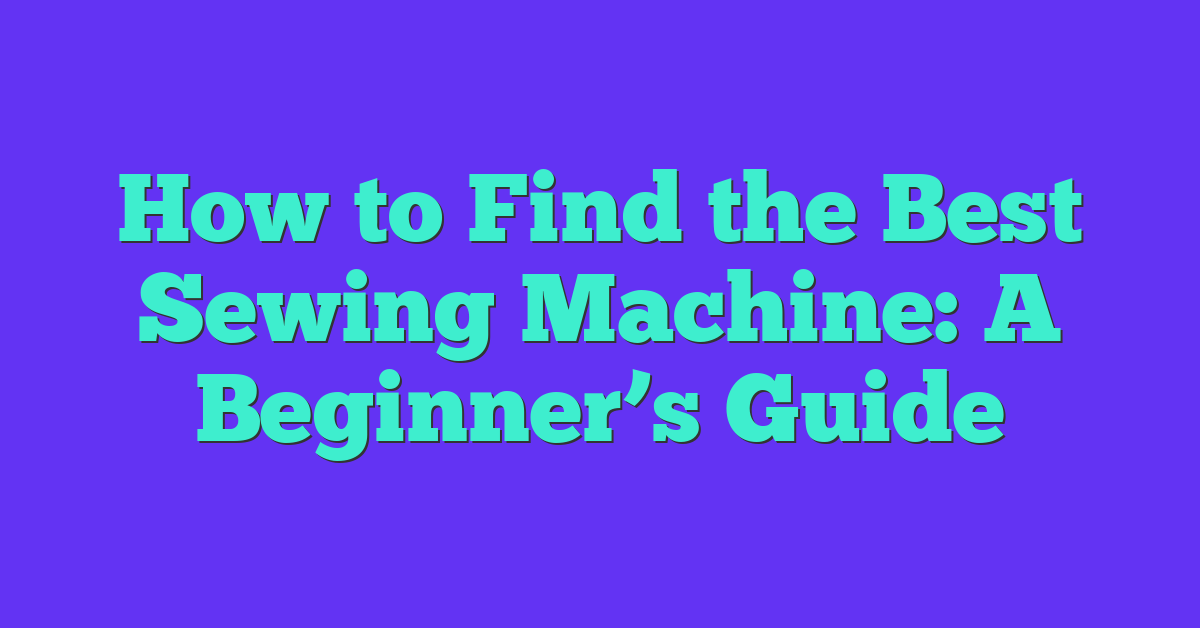Ever wondered where your trendy outfits come from? Fast fashion churns out the latest styles at lightning speed, making it easy to keep your wardrobe fresh without breaking the bank. But this rapid production comes with hidden costs that affect both the environment and the people who make your clothes.
You can make a difference by embracing sewing and mindful fashion choices. By learning to sew, you not only personalize your garments but also extend their lifespan, reducing the demand for new, cheaply made pieces. Plus, sewing empowers you to create sustainable fashion that reflects your unique style. Let’s explore how understanding fast fashion and honing your sewing skills can lead to a more ethical and fulfilling wardrobe.
Understanding Fast Fashion
Fast fashion produces trendy clothing quickly and affordably, responding to current market demands. This approach impacts both the environment and garment workers.
Definition And Origins
Fast fashion describes the rapid production of inexpensive clothing that mimics current high-fashion trends. Originating in the late 20th century, brands like Zara and H&M pioneered this model. These companies leverage efficient supply chains to accelerate the time from design to retail.
Key Characteristics
- Rapid Production Cycles: Brands release new collections multiple times a year, often weekly, to keep up with changing trends.
- Low Cost: Affordable pricing attracts a wide consumer base, enabling frequent purchases.
- Trend Replication: Designs closely follow runway trends, ensuring styles remain current and desirable.
- Disposable Nature: Emphasis on quantity over quality leads to shorter garment lifespans and increased waste.
- Global Supply Chains: Production often occurs in countries with lower labor costs, affecting worker conditions and wages.
The Impact Of Fast Fashion
Fast fashion reshapes the clothing industry with significant environmental and social repercussions. Understanding these impacts highlights the importance of sustainable practices in your wardrobe choices.
Environmental Effects
Fast fashion contributes extensively to environmental degradation. It accounts for approximately 10% of global carbon emissions, rivaling the aviation industry. Additionally, the sector consumes 93 billion cubic meters of water annually, equivalent to four years of global freshwater use.
| Environmental Impact | Data |
|---|---|
| Carbon Emissions | 10% of global emissions |
| Annual Water Consumption | 93 billion cubic meters |
| Textile Waste | 92 million tons disposed |
| Microfiber Pollution | 35% of ocean fibers sourced |
The production process often involves toxic chemicals, which contaminate water sources and harm wildlife. Moreover, synthetic fibers like polyester release microplastics during washing, infiltrating ecosystems and entering the food chain.
Social Consequences
Fast fashion relies on a global supply chain that frequently exploits labor in developing countries. Workers face low wages, long hours, and unsafe working conditions. For instance, the average garment worker earns less than $2 per hour, far below the living wage in many regions.
| Social Issue | Statistics |
|---|---|
| Average Wage | <$2 per hour |
| Working Hours | 60+ hours per week |
| Workplace Accidents | Increase by 20% annually |
| Child Labor Incidents | Reported in 20 countries |
These conditions hinder workers’ rights and well-being, perpetuating cycles of poverty and limiting access to education and healthcare. Addressing these social issues requires conscious consumer choices and support for ethical fashion initiatives.
Sustainable Alternatives
Exploring sustainable alternatives helps reduce the negative impacts of fast fashion. Adopting these practices fosters a more ethical and environmentally friendly wardrobe.
Slow Fashion Movement
The slow fashion movement emphasizes quality over quantity, promoting durable and timeless clothing. Brands like Patagonia and Everlane lead with transparent sourcing and ethical labor practices. Consumers prioritize sustainable materials such as organic cotton and recycled fibers, ensuring longer garment lifespans. Supporting local artisans and independent designers reduces reliance on global supply chains, minimizing environmental footprints.
Role Of Recycling
Recycling plays a crucial role in mitigating fast fashion’s environmental impact. Textile recycling reduces waste by repurposing discarded garments into new products. For example, companies like Renewcell convert old cotton into biodegradable fibers. Implementing circular fashion systems allows materials to circulate within the economy, decreasing the need for virgin resources. Additionally, recycling initiatives lower carbon emissions and conserve water, contributing to overall sustainability in the fashion industry.
How Sewing Helps
Sewing plays a crucial role in addressing the challenges posed by fast fashion. It offers practical solutions to reduce waste and empowers you to take control of your wardrobe.
Reducing Waste
By sewing your own garments, you extend their lifespan and minimize textile waste. Repairing, altering, and repurposing clothes prevent them from joining the 92 million tons of textile waste generated annually. Creating new pieces from existing fabrics reduces the demand for raw materials, conserving resources like water and energy.

Personal Empowerment
Sewing empowers you to design a personalized wardrobe tailored to your unique style. Crafting your own clothes gives you control over the quality and sustainability of your garments. Developing sewing skills fosters creativity and self-reliance, allowing you to experiment with different patterns and materials. This hands-on approach enhances your craftsmanship and promotes a mindful, intentional approach to fashion.
Getting Started With Sewing
Embarking on your sewing journey is both exciting and rewarding. Equip yourself with the right tools and master basic techniques to create a sustainable wardrobe.
Essential Tools
- Sewing Machine – Choose a reliable machine with multiple stitch options, such as those from Singer or Brother, to handle various fabrics.
- Needles – Keep different sizes and types, including universal, embroidery, and denim needles, for diverse projects.
- Threads – Select high-quality cotton or polyester threads in assorted colors to match your fabrics.
- Fabric Scissors – Use dedicated scissors for cutting fabric and separate ones for paper to ensure precision.
- Measuring Tools – A flexible measuring tape and clear rulers help achieve accurate measurements and cuts.
- Pins and Pincushion – Essential for holding fabric pieces in place before sewing.
- Iron and Ironing Board – Pressing seams and fabrics is crucial for professional-looking results.
Basic Techniques
- Threading the Machine – Learn to properly thread your sewing machine to prevent jams and ensure smooth stitching.
- Basic Stitches – Master essential stitches like the straight stitch, zigzag stitch, and backstitch for versatile sewing projects.
- Seaming and Hemming – Practice sewing seams and hemming garments to achieve neat and durable finishes.
- Cutting Fabric – Develop precision in cutting fabric patterns accurately to fit your designs.
- Reading Patterns – Understand sewing patterns to follow instructions and customize your clothing effectively.
- Pressing Seams – Use an iron to press seams flat, enhancing the overall appearance and structure of your garments.
- Finishing Edges – Learn techniques like French seams or serging to prevent fraying and add professional touches to your projects.
Conclusion
Choosing to sew your own clothes is a powerful step towards a more sustainable and personal wardrobe. It lets you express your unique style while reducing the negative impacts of fast fashion. By embracing sewing you take control of your fashion choices and contribute to a healthier environment. Start small and enjoy creating pieces that truly reflect who you are. Together we can make a difference one stitch at a time

















